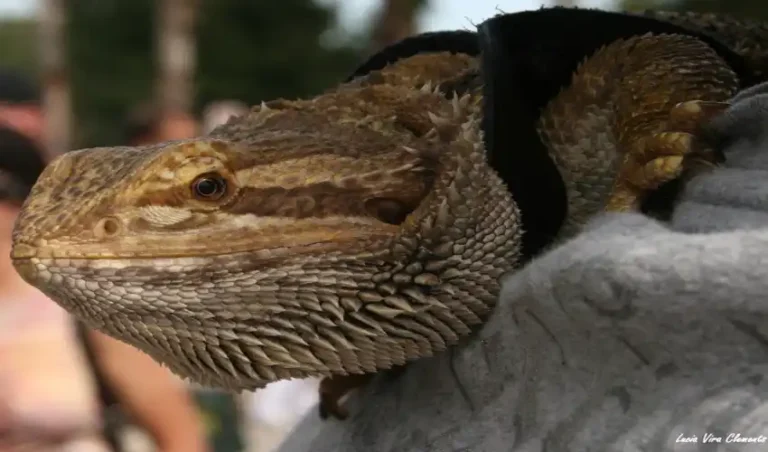German Giant Bearded Dragons, often considered one of the most impressive reptile breeds, are renowned for their large size, vibrant colors, and docile nature. As a pet, these lizards are not only visually striking but also make affectionate companions when given proper care. Whether you’re an experienced reptile keeper or a beginner, understanding the needs of these majestic creatures is key to providing a happy and healthy life for them.
What Makes German Giant Bearded Dragons Unique?
The German Giant Bearded Dragon is a variant of the standard bearded dragon species, Pogona vitticeps, and is known for its larger-than-average size. These dragons can reach lengths of up to 24 inches (60 cm) and weigh between 500 and 700 grams. Their robust build, combined with a relaxed temperament, makes them a popular choice among reptile enthusiasts.
One of the most attractive features of the German Giant Bearded Dragon is its impressive color palette. Their skin can range from vibrant reds, oranges, and yellows to more subdued shades of brown and gray. These colors, combined with the characteristic “beard” that flares out when the dragon is threatened or excited, create a striking and dramatic appearance.
Habitat and Enclosure Requirements
Creating the right environment is vital for the well-being of German Giant Bearded Dragons. They are native to the arid deserts of Australia, which means they thrive in warm, dry conditions with access to UVB light. Their enclosure should mimic their natural habitat as closely as possible.
A spacious terrarium is essential for these large lizards. A 75-gallon tank is typically recommended for an adult buy german giant bearded dragons. The enclosure should be equipped with a temperature gradient, with one side of the tank being warmer (95°F to 105°F) for basking, and the cooler side ranging from 75°F to 85°F. Nighttime temperatures should be kept between 65°F and 75°F.
In addition to heat, UVB lighting is crucial for the health of your bearded dragon. UVB light helps them synthesize vitamin D3, which is essential for calcium absorption and bone health. Special UVB bulbs designed for reptiles should be used to provide the necessary light, and they should be replaced every 6-12 months to maintain their effectiveness.
Diet and Feeding
German Giant Bearded Dragons are omnivorous, meaning their diet should consist of both plant-based foods and animal protein. A balanced diet is essential for their growth and overall health.
For animal protein, they can be fed live insects such as crickets, dubia roaches, and mealworms. These should be gut-loaded with nutritious food before feeding them to your dragon. Bearded dragons also enjoy other invertebrates like superworms, silkworms, and black soldier fly larvae, which provide a variety of nutrients.
Vegetables should make up a significant portion of their diet. Leafy greens like collard greens, dandelion greens, mustard greens, and turnip greens are excellent choices. You can also offer a variety of fruits such as berries, melon, and apples as occasional treats. It’s important to avoid feeding them iceberg lettuce, as it has little nutritional value, and foods that are high in oxalates, such as spinach and rhubarb, should be limited.
Supplementation is essential to ensure that your German Giant Bearded Dragon receives all the necessary nutrients. Calcium powder should be dusted on their food several times a week, and multivitamin supplements can be added once or twice a week. Proper calcium levels are critical for preventing metabolic bone disease, a common issue in reptiles that do not receive enough calcium.
Handling and Interaction
German Giant Bearded Dragons are known for their friendly and calm demeanor. They enjoy being handled and often form strong bonds with their owners. When handled gently and regularly, these reptiles can become very tame and enjoy spending time with their human companions. Bearded dragons can also recognize their owners and may even respond to their presence.
When handling your German Giant Bearded Dragon, it is essential to support its body properly and avoid grabbing or squeezing it. Bearded dragons prefer to climb onto their owners’ hands rather than being grabbed from above, which can feel threatening to them.
To avoid stressing your pet, it is crucial to handle them in a calm, quiet environment. Avoid sudden movements or loud noises, as these can startle your dragon. Regular, positive interactions will help ensure that your bearded dragon remains well-adjusted and comfortable with human contact.
Health and Maintenance
Keeping a German Giant Bearded Dragon healthy requires consistent care. Regularly check for signs of illness, such as loss of appetite, lethargy, abnormal shedding, or unusual behavior. If you notice any of these signs, it’s important to seek veterinary advice, especially from a vet who specializes in reptiles.
Proper hydration is another important aspect of care. While they primarily obtain moisture from their food, you can also mist their enclosure to maintain humidity levels. This is particularly important during shedding periods to prevent skin issues.
Bearded dragons also shed their skin regularly, especially when they are growing. During this time, it’s essential to ensure that the humidity levels are adequate and that your dragon has access to rough surfaces where they can rub off the old skin. Improper shedding can lead to retained skin, which can cause discomfort and health issues.
Conclusion
German Giant Bearded Dragons are a stunning addition to any reptile enthusiast’s collection. Their beauty, docile nature, and interactive behavior make them an ideal pet for those willing to invest the time and care needed to maintain their health and well-being. By providing a suitable environment, offering a balanced diet, and regularly interacting with your bearded dragon, you can enjoy the companionship of these remarkable creatures for years to come.

